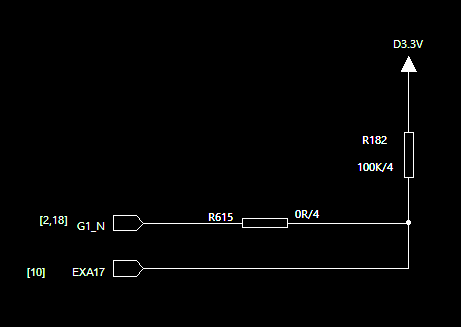Hi Team,
One input pin of DS90UB925 (G1) multiplexes the startup configuration of CPU. The CPU must detect a high level to enter the configured mode to start when power is turned on.
Now G1 pin of DS90UB925 defaults to pull down to cause startup failure.
I want to know How does the default pull-down resistor work in DS90UB925 power-up and power-down situations, and how much impedance it presents. Because the amplitude of the partial voltage change obtained by adjusting the resistance of pull-up resistor R182 is small.
As shown in the EXA17 network below, the voltage of EXA17 is 2.11V due to the default pull-down in DS90UB925, which is not enough to start the SOC.


